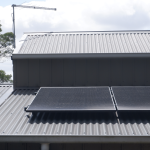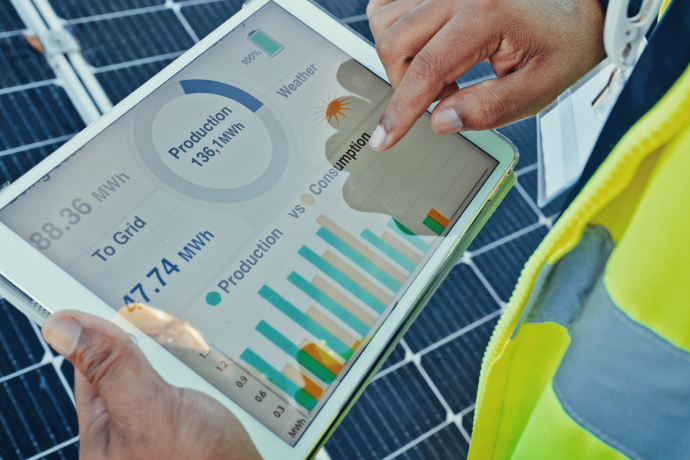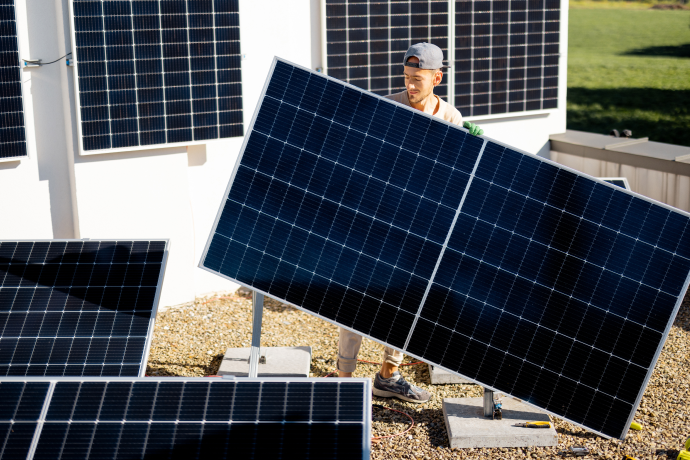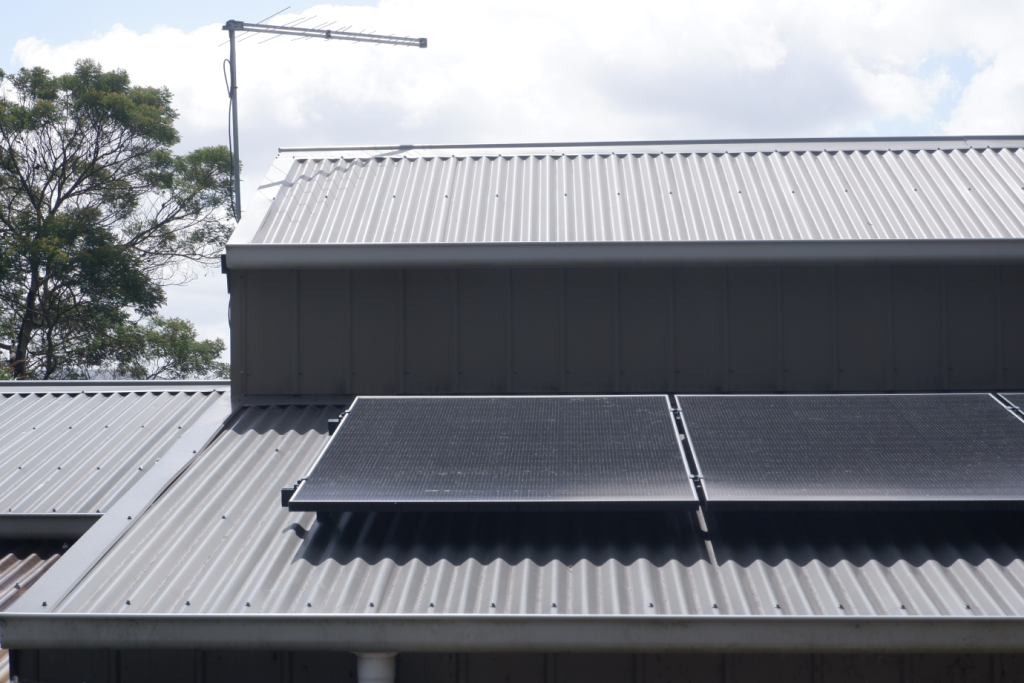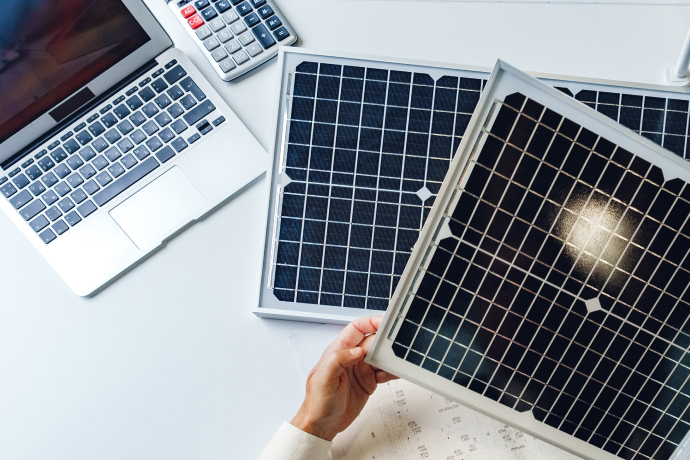Solar inverters are the brain in your solar system. They play an important role, ensuring all the direct current (DC) energy from your solar panels is converted into alternating current (AC) for your home. Because inverters are usually bought with your solar panel system, information on cost can be tricky to find. You should expect the cost of your inverter to range from $1,000 to $2,500. Your exact cost will heavily depend upon a variety of factors, from inverter type, capacity, government rebates and the amount of advanced features. Also important to understand the differences between a budget and premium device, the lifespan of an inverter and how to find the perfect size to match your system.
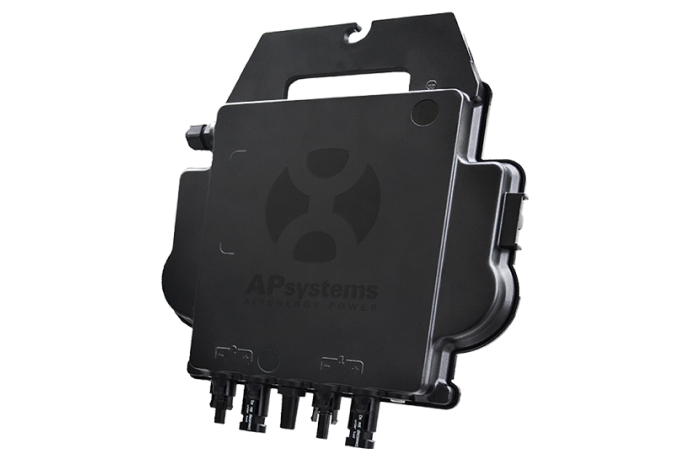
What Is a Solar Inverter?
An inverter is a vital component for any solar system. It’s responsible for converting the direct current (DC) produced by your solar panels into alternating current (AC), which powers your appliances. Without an inverter, your solar energy would be unusable in your home.
Inverters come in all different shapes and sizes, but in simple terms they are a box that houses electronic equipment to convert one type of electrical energy into another. They are usually mounted on a wall or roof, with wiring connecting them to your panels.
Types Of Solar Inverters
String Inverters
The most common type of inverter. They are called a string because one inverter can connect multiple solar panels in a series. The panels are linked together by their positive and negative terminals, which create a single path for the electricity to follow. String inverters have been a common inverter type for decades, primarily because of their simplicity and affordability. However, because all the panels are linked together in a series, if one panel is shaded, the output of the entire string is negatively affected.
Microinverters
Unlike string inverters, microinverters are individual units that are installed directly onto each solar panel. This means that each panel can operate independently, which is great for avoiding the shading issues plaguing string inverters. Each panel can perform to its maximum capacity, and any panels with lower production levels don’t affect the total output. However, microinverters generally have higher upfront costs than string inverters.
Power optimisers
Similar to both string inverters and microinverters in their design. Like microinverters, power optimisers are attached to each solar panel. Rather than changing the current from DC to AC, these inverters use Maximum Power Point Tracking (MPPT) to monitor and adjust the output of each individual panel. This DC energy is then sent to a central inverter for conversion to AC. Although costs are higher than string inverters, they can prevent a shaded panel from decreasing the output of the entire system.
Hybrid Inverters
Combines a solar inverter and a battery inverter into a single device. These inverters not only convert DC from your panels into AC, but can also manage your battery’s storage. They are extra-smart inverters that can handle power from solar panels, batteries and the grid simultaneously. It can direct solar energy to charge up your battery, or draw electricity from storage for when your home needs it. These are a great choice for ensuring the correct amount of power is stored within your batteries, for use during low sunlight conditions or a blackout. They are an expensive option, especially when you factor in the added cost for a solar battery.
Solar Inverter Cost
A solar inverter is usually not purchased by itself. It’s usually included as part of a complete solar panel system. Solar inverters also vary widely in price points and are heavily dependent on your inverter type.
For instance, the price of a string inverter can range from $500 to around $5,000. Hybrid inverters usually cost between $600 and $4,000, while microinverters can start from as little as $195 each.
Overall, you can expect the cost of an average 5kW solar inverter to range from approximately $1,000 to $2,500.
Note: these are rough estimates. Your exact price will depend upon factors such as panel size, inverter brand, installation costs and government rebates. Contact our expert team at Tasmanian Safer Solar (TSS) to find out.

Factors That Influence Solar Inverter Cost
The exact price of your solar inverter will depend upon the following factors:
- Size: The larger your solar system, the larger the inverter you’ll need, which directly impacts cost. Since higher-capacity inverters usually contain more advanced components, they are more expensive. For example, a 10kW inverter for a larger solar system will cost considerably more than a standard 5kW unit.
- Type: Your inverter type is one of the biggest factors influencing cost, as each type has a unique design and functionality that affects the price. Traditional string inverters are usually the most affordable option due to their simple design. Microinverters, which protect panels against shading, typically cost more than string inverters. Hybrid inverters are generally the most expensive, as they can manage both your solar panels and battery in a single device.
- Rebates: To help Tasmanians better afford renewable energy products, government rebates and incentives are available to reduce costs. The price of your inverter can be lowered by accessing Small-scale Technology Certificates (STCs), which are part of the federal Small-scale Renewable Energy Scheme (SRES). Under this scheme, when you install a rooftop solar system, which includes your solar inverter, you receive a set number of STCs. These certificates can then be sold to help offset your upfront costs. The number of STCs you receive depends on the size of your solar system, with larger systems that generate more renewable energy providing greater savings. As a Zone 4 qualifier, Tasmanians can reduce the overall cost of their solar systems by approximately 20–30 per cent. To be eligible, your inverter must be approved by the Clean Energy Council and installed by a Solar Accreditation Australia (SAA) accredited installer, such as TSS. For more information on federal rebates, visit the official government website here.
- Single-phase or three-phase: Whether your home has a single-phase or three-phase power supply will influence cost. In a single-phase system, electricity from your solar panels is converted by a single-phase inverter with a two-wire connection. This is the simplest and most common setup for homes, requiring just a single-phase inverter, which is relatively affordable. By contrast, a three-phase system delivers electricity through three live wires, making it better suited to larger homes or businesses with multiple high-powered electrical appliances. These systems require a three-phase inverter to balance energy across all three phases, which is generally more expensive.
- Brand: Like other solar system components, different brands will have different inverter prices. Premium brands will typically charge more for their inverters due to their proven track record in quality and reliability. Alternatively, cost-effective brands will charge less; however, these devices can have lower efficiency, shorter lifespans and a greater chance of failure. At TSS, we partner with a range of inverter manufacturers, compatible with different system types and household budgets. Some of these brands include: Fronius, SMA, Sungrow, and Huawei.
- Advanced features: If you’re looking at any advanced features, this will increase the overall cost of your inverter. These added features can include:
- Smart monitoring apps to track your solar output.
- Weatherproof design for outdoor installations.
- Added compatibility with batteries.
What are the Costs of Replacing a Solar Inverter?
If your inverter breaks down, you may be wondering about replacing it. Important to consider, because without an inverter, your entire system is Due to the complex components within your inverter, these devices are difficult to fix and will often require a full replacement.
As noted earlier, the average cost of a solar inverter ranges from $1,000 to $2,500. However, when factoring in installation costs, the total replacement price is likely to be around $3,000. Your exact cost will depend on the capacity of your inverter and the manufacturer you choose.
Because of these added expenses through installation, if you’re planning to replace your older inverter, it could make sense to replace the entire system. Particularly true if your system is too small or outdated, giving you the chance to take advantage of new technology.
Depending upon the length of your warranty, you may be able to replace your inverter without paying a significant bill. Your manufacturer may not replace it for free, however, you will usually pay less than full price. Check the paperwork that came with your inverter to find the exact terms of your warranty.
Budget Vs Premium Inverter
When investigating the price, you may question whether it’s worth paying more for a premium inverter, or whether a budget option will be enough.
Typically, investing in a premium inverter may be worth it for the following reasons. They will have a longer warranty period, often more than 10 years, and will be made with a superior build to withstand the Tasmanian weather. Although they will cost more, you may be able to save more money in the long run, with higher efficiency, fewer repairs and a longer lifespan. If you’re looking for a reliable inverter to handle your solar system long-term, a premium inverter is usually the smart choice. These devices will usually be $1,000 to $2,000 more than budget inverters, depending upon the manufacturer.
If you are on a strict budget, choosing a budget inverter can still be worthwhile. Just be prepared to replace your inverter sooner than expected. For many people, a mid-range option could provide the best balance between price and performance. These systems have high efficiency, durability, with longer warranties at a more affordable price than premium inverters.
If you’re unsure about whether a premium inverter is right for you, consult with your local installer or contact our team at TSS.
What Size Inverter Do I Need?
The size of your inverter will depend on the size of your solar panel system. Each inverter’s size is measured in Kilowatts (KW), which represents the maximum amount of electricity the inverter can manage.
Typically, you will need an inverter with a size capacity that is 75% of your solar panels. This is because a solar panel array will rarely generate its full maximum capacity, due to the amount of sunlight, the age of your panels and weather conditions. For example, a 6.6 kW solar system is often paired with a 5 kW solar inverter.
It is important to get the right size because if your inverter is too small, it may not be able to handle peak production, creating wasted energy. Conversely, an inverter that is too large can be unnecessarily expensive for your system’s output.
Your solar installer will be qualified to help find the perfect inverter size to suit your system requirements.
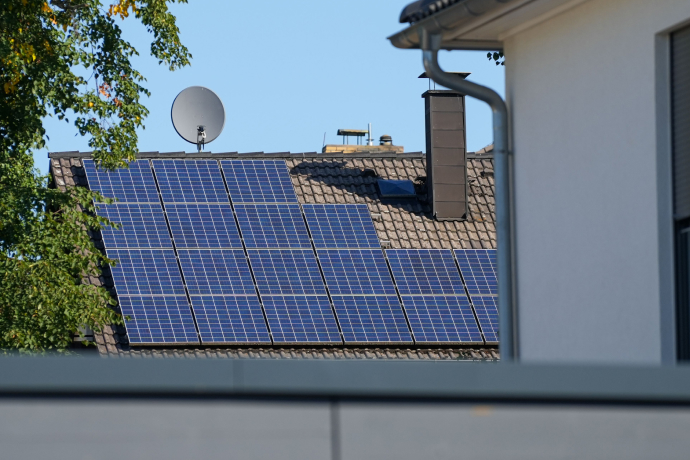
How Long Do Solar Inverters Last?
You should expect your solar inverters to last anywhere from 10 to 20 years. Your exact lifespan will depend upon its location relative to any harsh weather conditions, the level of maintenance performed, the brand and overall quality of the inverter.
Different types of inverters also have different lifespans. For example, a string inverter typically comes with a 10–12 year warranty, while microinverters often include warranties of up to 25 years, as they don’t carry the load of managing electricity from the entire array.
It’s important to choose an inverter with a long enough warranty to ensure any issues can be resolved at no additional cost. If you’re unsure about warranty periods or the lifespans of different inverter types, contact our team at TSS.
Solar inverters are one of the most important parts of your solar system. They help to make the electricity generated by the sun usable for your home appliances. Although cost can vary depending upon your inverter size, type and efficiency level, we estimate the cost for a 5kW device to sit between $1,000 and $2,500. For more information on inverter pricing, please reach out to our expert team at TSS.


